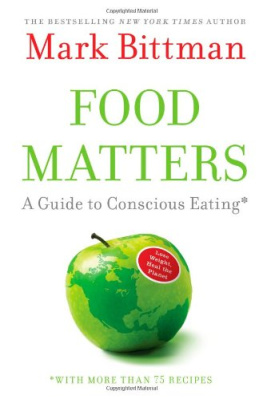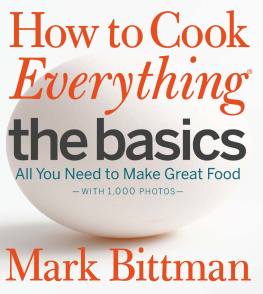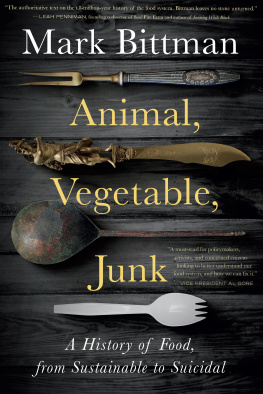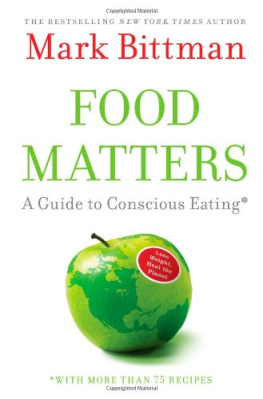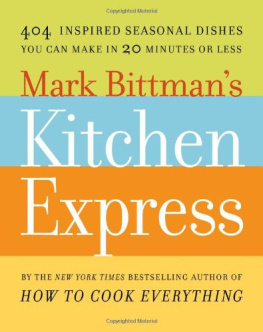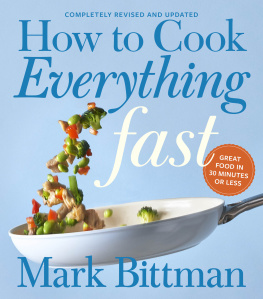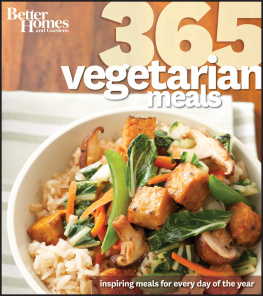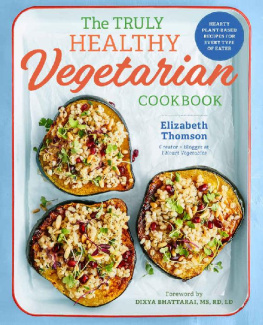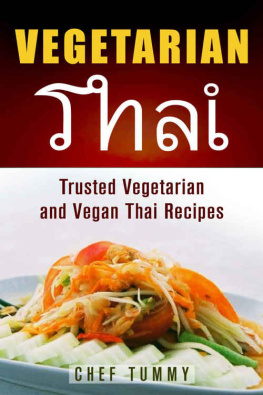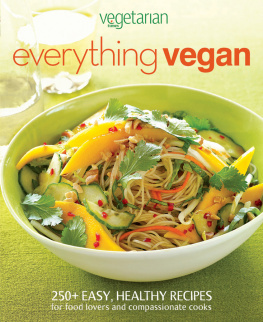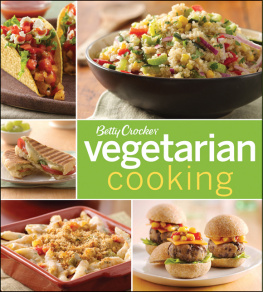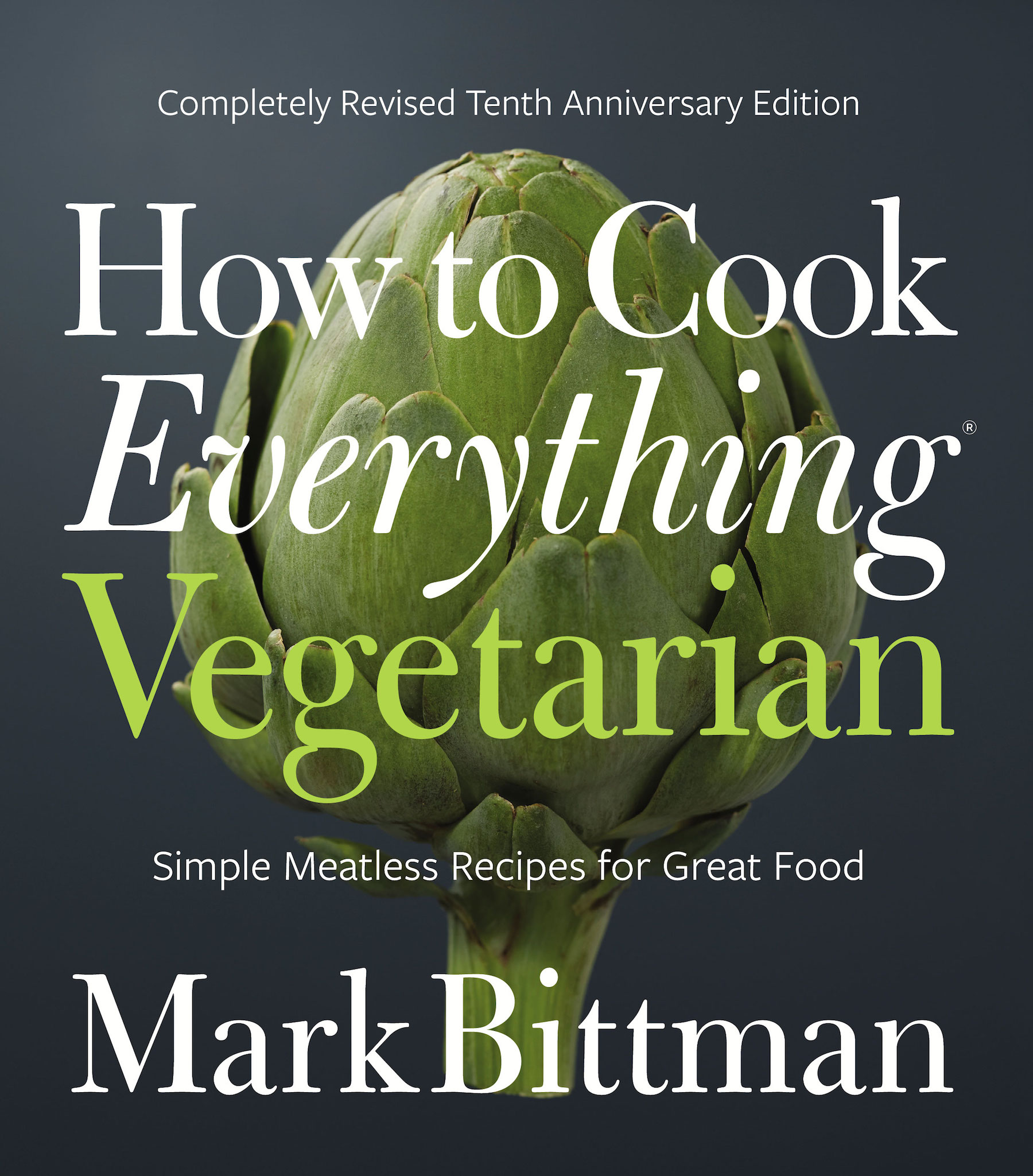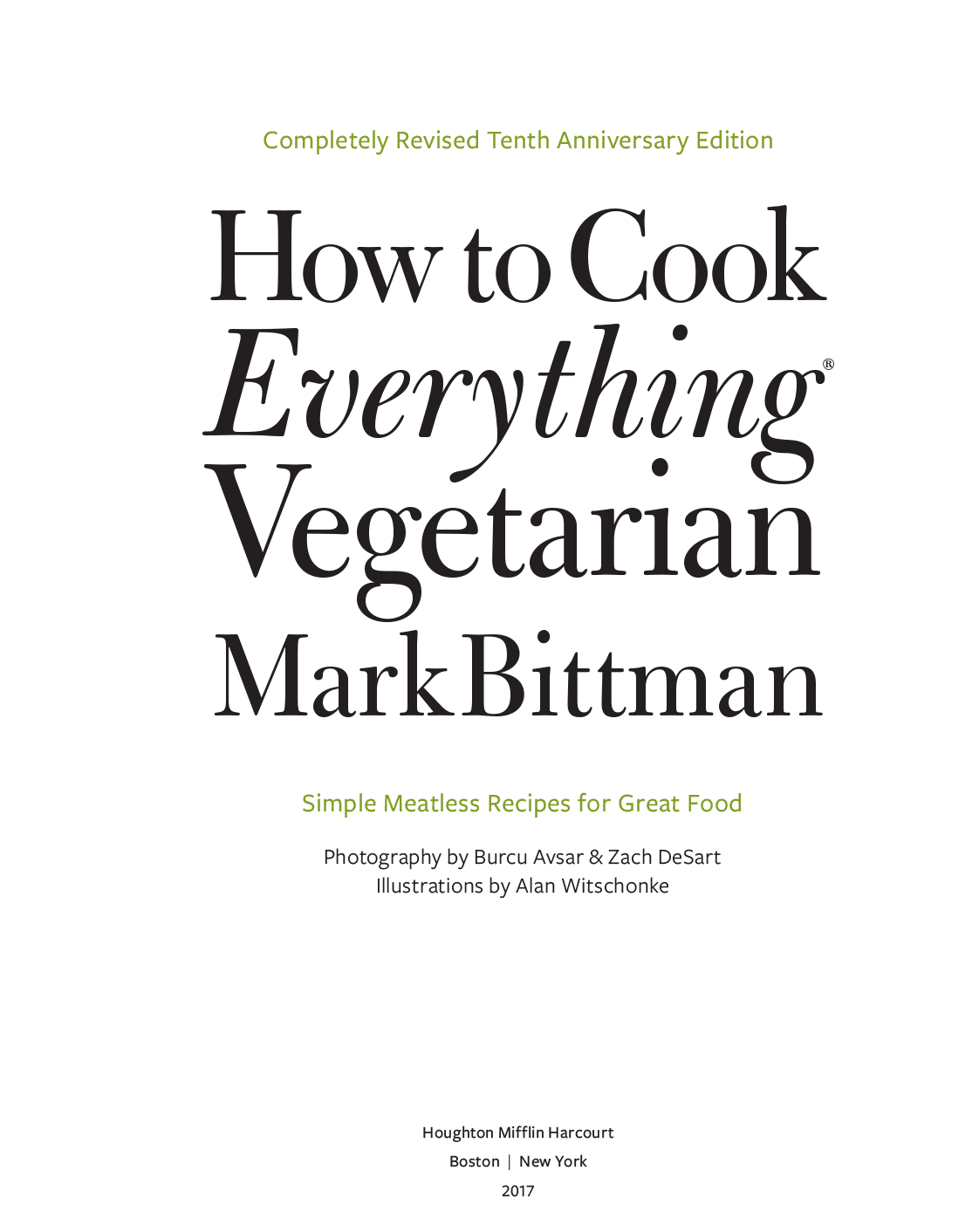Copyright 2017 by Double B Publishing, Inc.
For information about permission to reproduce selections from this book, write to trade.permissions@hmhco.com or to Permissions, Houghton Mifflin Harcourt Publishing Company, 3 Park Avenue, 19th Floor, New York, New York 10016.
Library of Congress Cataloging-in-Publication Data is available.
Contents
The best meatless meals are the ones you cook yourself. Start now, here.
A light side dish or a full mealhere are many refreshing green salads, plus vegetable, bean, and grain salads. Pickles, too.
Among the easiest dishes to cook, yet with results everyone loves. Heres a wide range of vegetarian soups from around the world, from basic to complex.
A-to-Z details on every major vegetable and fruit, as well as techniques and recipes for preparing them in every way imaginable.
The worldwide favorites in vegetarian style, including noodles from scratch, classics from Europe and Asia, and inspiration for endless variations.
Rice disheslike risotto and sushiare only part of the story. Versatile whole grainslike barley, bulgur, and quinoaare quick-cooking and easy to master.
A full collection of dishes that includes skillet beans, stews, pures, classic and innovative baked beans, crunchy fritters, and cakes.
From grilled tofu to juicy vegetable burgers, this is the place for high-protein vegetarian dishes.
Eggs go way beyond breakfast. After exploring boiling, scrambling, frying, and so on, try easy but sophisticated egg dishes, or the recipes for cooking with cheeseand even how to make your own.
The basics of quick breads and muffins, flatbreads and crackers, super yeast breads and pizzas, as well as ideas for filling all kinds of handheld breads like tacos and summer rolls.
A staggering array of sauces, salsas, spice mixes, marinades, and more, plus the fundamentals about herbs and spices, oils and vinegars.
Creative, great-tasting, easy to make, and imaginative cookies and bars, cakes, pies, ice cream, puddings, and more.
Delicious juices, shakes, and other refreshments, from the perfect cold-brew coffee to nourishing meal-in-a-glass smoothies.
Acknowledgments
Much has changed since the publication of the original How to Cook Everything Vegetarian, both in my life and in the world of vegetarian cooking. One thing thats remained constant is my close association with Angela Miller and Kerri Conan; without either of them, none of this would have happened.
The original edition was produced with work, help, and/or support by or from Amanda McDougall, Chris Benton, Kate Bittman, Emma Baar-Bittman, Sean Santoro, Peter Meehan, Linda Funk, Thom Leonard, Susan Hughes, Genevieve Ko, Rita Powell, Alice Kearney, Julia Turshen, Carl Karush, Michael Chessa, Mark Fitzgerald, Alan Richman, Linda Ingroia, Todd Fries, Natalie Chapman, Michael Friedberg, Adam Kowit, Charleen Barila, Rob Garber, Michael Olivo, Jeff Faust, Nick Anderson, Gypsy Lovett, Carrie Bachman, and Serene Jones.
This wonderful and thorough revision was largely and splendidly managed by Pam Hoenig, with some serious help from Kerri and Emily Stephenson. Others on my team included Jennifer Griffin, Perri O. Blumberg, Grace Rosanova, and Kate Bittman. The wonderful, beautiful, I-cant-say-enough-about-it photography is by Burcu Avsar and Zach DeSart, with food styling by Victoria Granof and Burcu Avsar.
And, we have an entire publishing house behind us, in this case HMH, whose How to Cook Everything cohort includes Deb Brody, Bruce Nichols, Rebecca Liss, Jessica Gilo, Melissa Lotfy, Marina Padakis Lowry, Tom Hyland, Kevin Watt, David Futato, and Rebecca Springer. The day-to-day editor not a fun job, dealing with me, but she handled it brilliantly was Stephanie Fletcher. Suzanne Fass copyedited.
To my friends and family, thank you, as always. To my kids, Ive said it before and Ill keep saying it: You are the best. To my mom: Youve seen quite a few of these! Congrats to you too. And to Kathleen, thanks for being there/here during the sometimes tortured and always rewarding hours of producing this monster.
Mark Bittman
New York, 2017
Introduction
Im not a vegetarian, nor am I invested in you becoming one. I began writing How to Cook Everything Vegetarian in 2002, when I realized that our future depended on eating more plant-based foods. Ill get into the why of that in a bit, but the book became a fascinating journey of both introspection and revelation: As I explored the world of cooking plants, I continued to recognize how important a skill this was for home cooks, and how it could really be both life- and planet-changing.
Its worth noting that my changed cooking and eating experience in the ten years since How to Cook Everything Vegetarian was first published has been largely in sync with that of much of the U.S. population. Yes, Americans continue to outconsume just about everyone when it comes to meat only the Australians beat us, 205 pounds of meat and poultry per year to our 200.6 pounds in 2015 but there has also been an uptick in the number of Americans who identify themselves as vegetarians (this includes vegans). In a Harris poll conducted by the Vegetarian Resource Group in 2016, more than 35 percent of Americans said they ate a vegetarian meal at least once a week, at home or in a restaurant.
Twenty years ago that number was probably 5 percent. And almost everyone I talk to eats less red meat than they used to.
What encourages me is that the idea of eating meatless meals the understanding that this is a healthy thing to do and worth aspiring to has become mainstream. Whether you do it for reasons of health, animal rights, cost (cut back on meat and especially processed foods, and watch your food bills drop), or environmental responsibility, abstaining from eggs, dairy, and meat, either as a lifelong choice or as a goal within an omnivore diet (as I do), has become part of the national conversation about food.
Its also a lot easier to be a part- or full-time vegetarian than it was ten years ago. All supermarkets have refrigerated sections for soy products, carrying both block and silken tofu, as well as miso, tempeh, and seitan. And who could have envisioned so many healthy ingredients essentially going viral quinoa, kale, cauliflower, brown rice, unsweetened yogurt, chia seeds?
In addition, interest in how people eat across the globe and the desire to discover and experiment with unfamiliar flavors has led to the mainstreaming of ingredients that were considered exotic ten years ago: smoked paprika, lemongrass, gochujang, harissa, mangoes, sherry vinegar, all manner of seaweed. Its a fantastic time to be a home cook and the perfect time to experiment with meat-free cooking.


